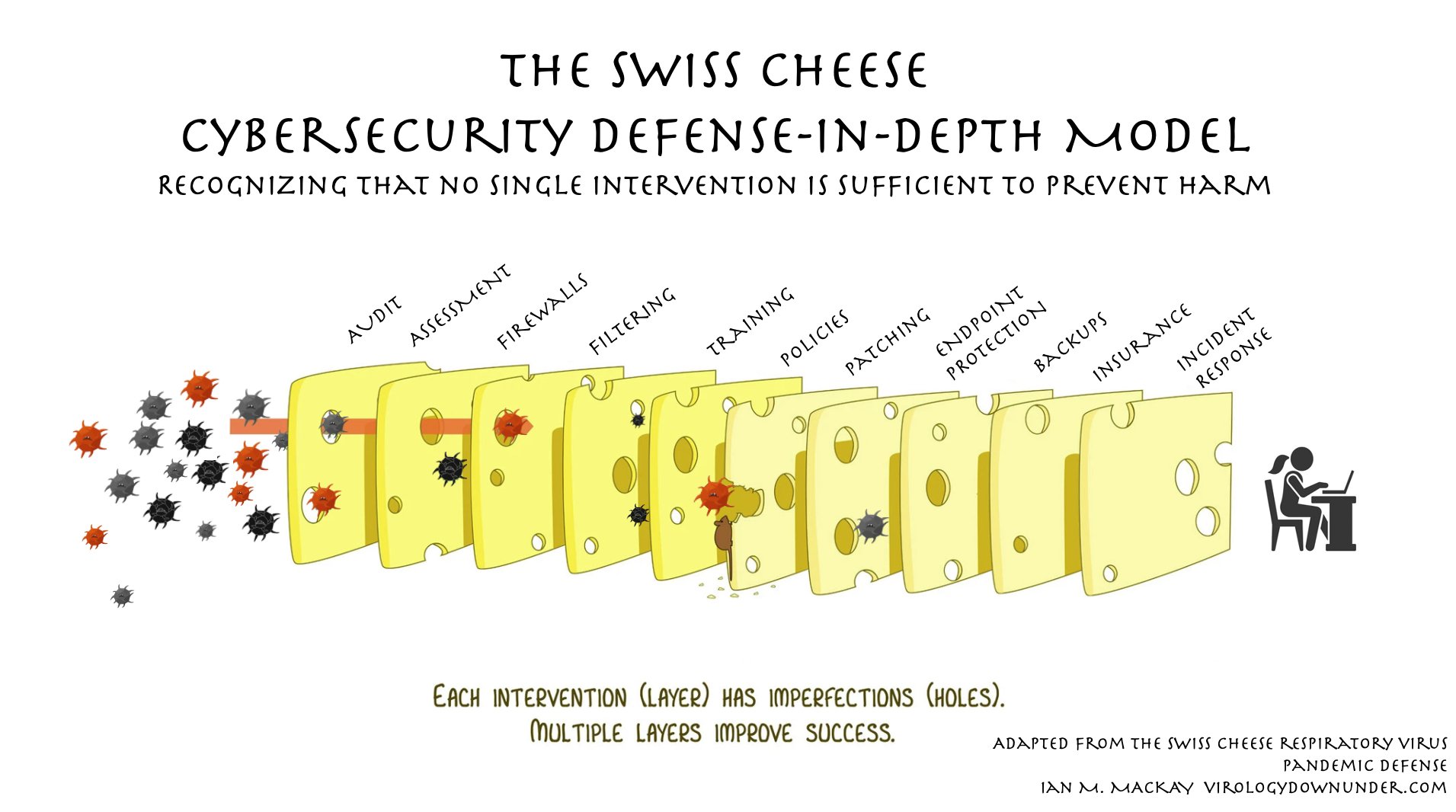The Swiss cheese cybersecurity model
The Swiss cheese model is a risk management concept that can be applied to cybersecurity to help organizations understand and mitigate the risks they face. The model suggests that there are multiple layers of defense, or “slices of cheese,” in place to protect an organization from cyber threats. However, each layer has its own vulnerabilities, or “holes,” which can be exploited by attackers.
The Swiss cheese model was first developed by James T. Reason, a British psychologist and safety expert, to explain why accidents and failures sometimes occur even when multiple layers of defense are in place. The model has since been applied to various fields, including aviation, healthcare, and cybersecurity.
In cybersecurity, the Swiss cheese model can be used to visualize the various controls and defenses that an organization has in place to protect itself from cyber threats. These controls can include technical measures, such as firewalls and antivirus software, as well as non-technical measures, such as employee training and policies and procedures.
The idea behind the Swiss cheese model is that each of these controls and defenses is like a slice of cheese, with its own unique vulnerabilities or holes.
These holes can be exploited by attackers to breach an organization’s defenses. However, the model also suggests that the chances of an attacker successfully breaching an organization’s defenses are significantly reduced if multiple layers of defense are in place, because the attacker would need to find a vulnerability in each layer in order to successfully exploit it.
One of the key benefits of the Swiss cheese model is that it encourages organizations to adopt a holistic approach to cybersecurity. Rather than focusing on a single control or defense, the model encourages organizations to consider the entire system of controls and defenses they have in place and how they can be strengthened.
For example, an organization might have a strong firewall in place to protect against external threats. However, if employees are not trained on how to identify and prevent phishing attacks, the organization could still be vulnerable to a cyber attack through this “hole” in its defenses.
By adopting a holistic approach and considering all of the controls and defenses an organization has in place, the Swiss cheese model can help organizations identify and address vulnerabilities before they are exploited by attackers.
